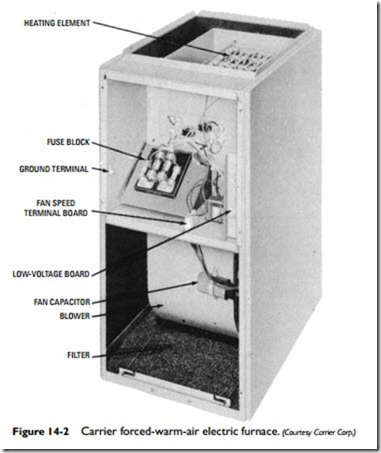Planning Suggestions
If an electric furnace is being planned for a new structure, the maximum heat loss for each heated space must be calculated in accordance with procedures described in the manuals of the National Warm Air Heating and Air Conditioning Association or by a com- parable method. This is very important, because these data will be used to determine the size (capacity) of the furnace selected for the installation.
Do not consider an electric heating system unless the structure is insulated properly. This insulating will be more extensive than that used with other types of heating systems. For example, ceilings should have a minimum of 6 in of blanket or loose-fill insulation, and cavities between studs in exterior walls should be filled with insulation completely. A description of the insulation requirements for a structure in which an electric heating system is used is included in Chapter 9, “Electric Heating Systems.”
If the heating or heating/cooling installation is to be approved by either the Federal Housing Authority (FHA) or the Veterans’ Administration (VA), heat loss and heat gain calculations should be
made in accordance with the procedures described in the Air Conditioning Contractors of America’s Manual J.
Location and Clearance
An electric forced-warm-air furnace should be located as near as possible to the center of the heat distribution system. Centralizing the furnace eliminates the need for one or more exceptionally long supply ducts. Long supply ducts are uneconomical because they are subject to a certain amount of heat loss. The number of elbows should be kept to a minimum for the same reason.
Electric furnaces are not vented, because electric heat is not produced by the combustion process. No flue gases or other toxic products of the combustion process occur with electric heat. As a result, a chimney and flue pipe are not required, and it is not necessary to consider these factors when locating the furnace.
A clearance of 24 to 30 inches in front of the furnace access panel should be provided for servicing and repairs. There is no minimum clearance requirement for ductwork and combustible materials. Electric furnaces may be installed with zero clearance between the cabinet and combustible materials, because the heat from the furnace is not produced by a flame.
